Mr. Jinnah’s presidential address to the Constituent Assembly of Pakistan
August 11, 1947
Mr. President, Ladies and Gentlemen!
I cordially thank you, with the utmost sincerity, for the honor you have conferred upon me – the greatest honor that is possible to confer – by electing me as your first President. I also thank those leaders who have spoken in appreciation of my services and their personal references to me. I sincerely hope that with your support and your co-operation we shall make this Constituent Assembly an example to the world.
The Constituent Assembly has got two main functions to perform.
The first is the very onerous and responsible task of framing the future constitution of Pakistan and the second of functioning as a full and complete sovereign body as the Federal Legislature of Pakistan.
We have to do the best we can in adopting a provisional constitution for the Federal Legislature of Pakistan. You know really that not only we ourselves are wondering but, I think, the whole world is wondering at this unprecedented cyclonic revolution which has brought about the clan of creating and establishing two independent sovereign Dominions in this sub-continent. As it is, it has been unprecedented; there is no parallel in the history of the world. This mighty sub-continent with all kinds of inhabitants has been brought under a plan which is titanic, unknown, unparalleled. And what is very important with regards to it is that we have achieved it peacefully and by means of an evolution of the greatest possible character.
Dealing with our first function in this Assembly, I cannot make any well-considered pronouncement at this moment, but I shall say a few things as they occur to me.
The first and the foremost thing that I would like to emphasize is this: remember that you are now a sovereign legislative body and you have got all the powers. It, therefore, places on you the gravest responsibility as to how you should take your decisions.
The first observation that I would like to make is this: You will no doubt agree with me that the first duty of a government is to maintain law and order, so that the life, property and religious beliefs of its subjects are fully protected by the State.
The second thing that occurs to me is this: One of the biggest curses from which India is suffering – I do not say that other countries are free from it, but, I think our condition is much worse – is bribery and corruption. That really is a poison. We must put that down with an iron hand and I hope that you will take adequate measures as soon as it is possible for this Assembly to do so.
Black-marketing is another curse. Well, I know that black marketeers are frequently caught and punished. Judicial sentences are passed or sometimes fines only are imposed. Now you have to tackle this monster, which today is a colossal crime against society, in our distressed conditions, when we constantly face shortage of food and other essential commodities of life.
A citizen who does black-marketing commits, I think, a greater crime than the biggest and most grievous of crimes. These black marketeers are really knowing, intelligent and ordinarily responsible people, and when they indulge in black-marketing, I think they ought to be very severely punished, because the entire system of control and regulation of foodstuffs and essential commodities, and cause wholesale starvation and want and even death.
The next thing that strikes me is this: Here again it is a legacy which has been passed on to us. Along with many other things, good and bad, has arrived this great evil, the evil of nepotism and jobbery. I want to make it quite clear that I shall never tolerate any kind of jobbery, nepotism or any any influence directly of indirectly brought to bear upon me. Whenever I will find that such a practice is in vogue or is continuing anywhere, low or high, I shall certainly not countenance it.
I know there are people who do not quite agree with the division of India and the partition of the Punjab and Bengal. Much has been said against it, but now that it has been accepted, it is the duty of everyone of us to loyally abide by it and honorably act according to the agreement which is now final and binding on all. But you must remember, as I have said, that this mighty revolution that has taken place is unprecedented. One can quite understand the feeling that exists between the two communities wherever one community is in majority and the other is in minority. But the question is, whether it was possible or practicable to act otherwise than what has been done. A division had to take place.
On both sides, in Hindustan and Pakistan, there are sections of people who may not agree with it, who may not like it, but in my judgment there was no other solution and I am sure future history will record is verdict in favor of it. And what is more, it will be proved by actual experience as we go on that was the only solution of India’s constitutional problem. Any idea of a united India could never have worked and in my judgment it would have led us to terrific disaster. Maybe that view is correct; maybe it is not; that remains to be seen.
All the same, in this division it was impossible to avoid the question of minorities being in one Dominion or the other. Now that was unavoidable. There is no other solution. Now what shall we do?
Now, if we want to make this great State of Pakistan happy and prosperous, we should wholly and solely concentrate on the well-being of the people, and especially of the masses and the poor.
If you will work in co-operation, forgetting the past, burying the hatchet, you are bound to succeed. If you change your past and work together in a spirit that everyone of you, no matter to what community he belongs, no matter what relations he had with you in the past, no matter what is his colour, caste or creed, is first, second and last a citizen of this State with equal rights, privileges, and obligations, there will be on end to the progress you will make.
I cannot emphasize it too much. We should begin to work in that spirit and in course of time all these angularities of the majority and minority communities, the Hindu community and the Muslim community, because even as regards Muslims you have Pathans, Punjabis, Shias, Sunnis and so on, and among the Hindus you have Brahmins, Vashnavas, Khatris, also Bengalis, Madrasis and so on, will vanish.
Indeed if you ask me, this has been the biggest hindrance in the way of India to attain the freedom and independence and but for this we would have been free people long long ago. No power can hold another nation, and specially a nation of 400 million souls in subjection; nobody could have conquered you, and even if it had happened, nobody could have continued its hold on you for any length of time, but for this. Therefore, we must learn a lesson from this.
You are free; you are free to go to your temples, you are free to go to your mosques or to any other place or worship in this State of Pakistan. You may belong to any religion or caste or creed that has nothing to do with the business of the State. As you know, history shows that in England, conditions, some time ago, were much worse than those prevailing in India today. The Roman Catholics and the Protestants persecuted each other. Even now there are some States in existence where there are discriminations made and bars imposed against a particular class.
Thank God, we are not starting in those days. We are starting in the days where there is no discrimination, no distinction between one community and another, no discrimination between one caste or creed and another. We are starting with this fundamental principle that we are all citizens and equal citizens of one State. The people of England in course of time had to face the realities of the situation and had to discharge the responsibilities and burdens placed upon them by the government of their country and they went through that fire step by step.
Today, you might say with justice that Roman Catholics and Protestants do not exist; what exists now is that every man is a citizen, an equal citizen of Great Britain and they are all members of the Nation.
Now I think we should keep that in front of us as our ideal and you will find that in course of time Hindus would cease to be Hindus and Muslims would cease to be Muslims, not in the religious sense, because that is the personal faith of each individual, but in the political sense as citizens of the State.
Well, gentlemen, I do not wish to take up any more of your time and thank you again for the honor you have done to me. I shall always be guided by the principles of justice and fair play without any, as is put in the political language, prejudice or ill-will, in other words, partiality or favoritism. My guiding principle will be justice and complete impartiality, and I am sure that with your support and co-operation, I can look forward to Pakistan becoming one of the greatest nations of the world.
I have received a message from the United States of America addressed to me. It reads:
I have the honor to communicate to you, in Your Excellency’s capacity as President of the Constituent Assembly of Pakistan, the following message which I have just received from the Secretary of State of the United States:
On the occasion of of the first meeting of the Constituent Assembly for Pakistan, I extend to you and to the members of the Assembly, the best wishes of the Government and the people of the United States for the successful conclusion of the great work you are about to undertake.
When you read this and look at today’s Pakistan, 60 years later, EVERYTHING that Jinnah warned us against is now in Pakistan…. and politicians use the great Quaid’s name to justify anything that they are doing.
Before you follow or elected anyone, make sure that they don’t have the qualities that Jinnah said would destroy Pakistan. We now need to work hard to TAKE BACK PAKISTAN to follow Quaid-e-Azam, Allama Iqbal and Chaudhry Rehmat Ali, and Liaquat Ali Khan’s vision of Pakistan, which has been polluted.
Sub Sey Pehlay Pakistan…. Us Sey Pehlay Pakistani!!
A Picture Hidden From The World
Pakistan meaning the “The land of pure” where each day the sun rises with a new hope, with an enduring majesty as the rays of light flushing down towards the snowcapped peaks of Himalaya’s and Nanga Parbat. A land where love finds a meaning in the heart warming hospitability of people, a land where history and ancient civilization mystifies one’s heart, a land where spiritualism unveils its mystery at the shrines of Sufi Saints. This is the land I belong to, this is the land I’ll die for and this is the land that defines my identity.
The Invincible 167 Million : 6th largest Nation of the World

The invincible 167 million Pakistani’s progressing forward with high hopes and a mission holding an unquenchable thirst to be the world leader’s soon. Despit the chaos, despite the ill spilled by the westeren media to demoralize the nation and to uproot the patriotism from the hearts and minds of people of this country, despite the foreign funded terrorists bombing hundreds of Pakistani’s each day painting the roads red with the blood of young children, women and men. Every drop of it shouts back loud ” You can never take us down, We’ll fight back till our last breath“. Reminding you this is the nation which has a 7th largest pool of scientists and Engineers in the World[1]. and the country that is ranked 9th in the world where English language is spoken and used as an official language [1].
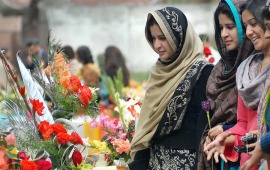 Pakistan: World’s 9th Largest English Speaking Country | Photo by Sultan Dogar: Abbotabad Medical College
Pakistan: World’s 9th Largest English Speaking Country | Photo by Sultan Dogar: Abbotabad Medical College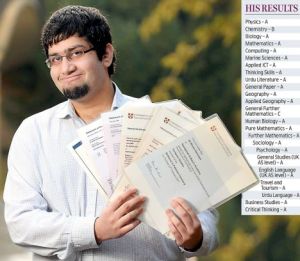 Pakistan: World 7th largest Pool of Scientists and Engineer | Photo : Moin Ali Nawazish making a World Record by passing 23 A level Exams
Pakistan: World 7th largest Pool of Scientists and Engineer | Photo : Moin Ali Nawazish making a World Record by passing 23 A level ExamsOn May 28, 1998, Pakistan became the 7th nuclear power of the world giving a loud and clear message to the enemies that this nation is fully equipped and ready to defend it’s sovereignty. Pakistan has world 7th largest standing arm forces [1] well trained possessing state of the art technology. Pakistan Air force (PAF) is the symbol of pride for the nation and a galaxy of highly trained professionals emerged in latest technological developments. The highly skilled PAF personals are renowned for their excellence and handling of aircraft and surely are the worst fear for the enemies.
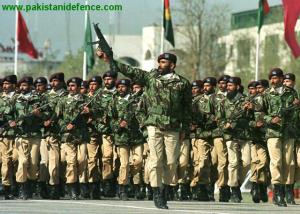 Pakistan: 7th largest Standing Arm Force in the World
Pakistan: 7th largest Standing Arm Force in the World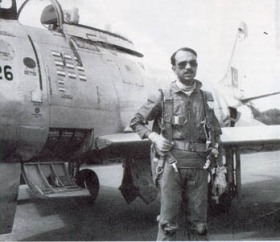
Air force :Air Commodore MM ALAM has a world record of shoting down 5 Indian planes in less than a Minute
Pakistan : The Roof Top of the World
Pakistan the land of grand mountain ranges, a land that holds 4 out of 14 most highest peaks in the world. K2 the second highest mountain in the world with all it’s grandeur symbolizing the pride and strength of the people of Pakistan.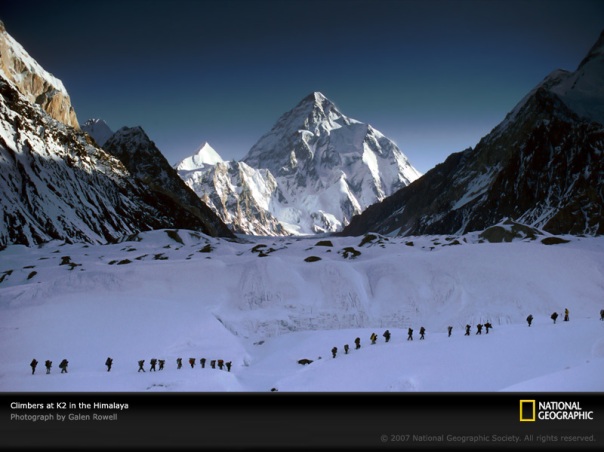
Pakistan: K2 the 2nd highest mountain peak in the World
Hunza is said to be a place ” Where Time Stops and Fairy Treads“, Kalash and Chitral are the natural wonders of the world where poetic verses find their inspirations from the beauty and elegance of high peak mountains, lush green fields and the fragrant breeze singing across the poplar trees. Some of the places which are not highlighted by the media but still due to their magnitude find their places on the World record books are ; Aisa’s Highest Railway Station Kan Mehtarzai [2] that is located 2240 meters above sea level near Quetta.
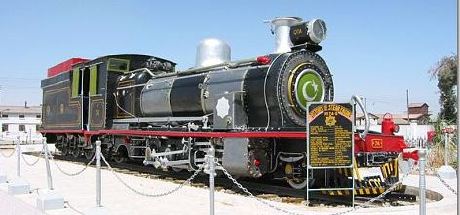
Pakistan: Asia’s Highest Railway Station “Kan Mehtarzai “
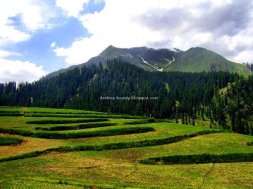 Pakistan: Lalazar often termed as most beautiful place on earth
Pakistan: Lalazar often termed as most beautiful place on earth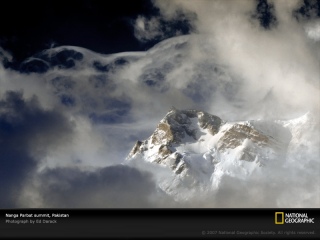 Pakistan: Nanga Parbat 9th Highest Peak in the World
Pakistan: Nanga Parbat 9th Highest Peak in the WorldWhat it would feel like to play a sport that is wild, challenging and manly at the top of the world surrounded by the drumbeats and the music of the reed instrument. Yes Shandur Polo tournament is played every year at World’s highest Polo ground at Shandur, Northern Pakistan.

Pakistan: Shundur Polo festival at the World’s highest Polo ground
Karakoram Highway : Eighth Wonder of the World
Karakoram Highway runs through the northern areas connecting Pakistan with China’s Xingjiang province is often described as ” Eighth Wonder of the World” due to the marvel of civil engineering as it has taken 15 years to complete by the Pakistan Army Engineers in collaboration with China. It’s been labeled as ” World’s highest paved international Road” under world’s toughest terrain

Pakistan: Karakoram Highway World’s highest paved international Road
World’s Largest Deep Sea Port : Gwader
“Gwa” means Air and “Dar” means door, and the word Gawadar means ” The door of the wind” is the world’s largest deep sea port lies in southwestern Pakistani province of Balochistan. The design and construction of the port is carried out in collaboration with China and it has just started it’s operation.It’s going to emerge as a world’s biggest skyline due to it’s capacity and infrastructure of handling bulk carriers. It has been declared as a Duty Free Port and Free Economic Zone by the Pakistani government that has increased the commercial worth manifolds. It has an immense geostrategic importance as it is the entrance to the Persian Gulf and is considered to be a substitute of Dubai Port.

Gawader: World’s Largest Deep Sea Port
Khewra Mines : Second Largest Salt Mine in the World
Khewra Salt Mine located in Khewra, Jehlum Punjab, Pakistan is the second largest Salt Mine in the world and is considered to be the oldest in the subcontinent. It was said that discovery of Salt mines were not done by Alexander or his army but by their horses as they started licking the stones when they stopped here for rest. Thousand of visitors each year visit Khewra Salt mines and get fascinated by the nature’s miraclein the heart of mountains.

Khewra Salt Mine: Second Largest Salt Mine in the World
Haleji Lake : Asia’s largest Bird Sanctuary
Pakistan is a land of serene beauty , a country with diverse wild life , fresh water lakes, a 1046 km coast lines. Some of the most unique species of birds are found in northern Pakistan with awe-inspiring natural wonders like Lake Saiful Maluk, Lake Shandur, Dudipatsar Lake, kutwal lake, Zalzal lake and many more. But Haleji has it’s own significance as it is Asia’s largest waterfowl reserve. During winter thousands of birds of different species fly down to Haleji from Siberian colder areas

Pakistan: The heavenly Shandur Lake
Thar Desert : One amongst the largest deserts in the World
Thar is a arid region in the north western part of Indian subcontinent, it lies mostly in Indian state of Rajasthan but it covers eastern Sindh province and the southeastern portion of Pakistan’s Punjab province. It is amongst one of the largest desertsin the world rich multifaceted culture, heritage, traditions, folk tales, dances and music. The poetic expression of Kafi written by Sufi poets of Sindh resonates in the cold nights as the Thari musicians start singing them on sorrowing rhythmic beats. In the night the granules of the sand lit up like stars as the moonlight walks on them.
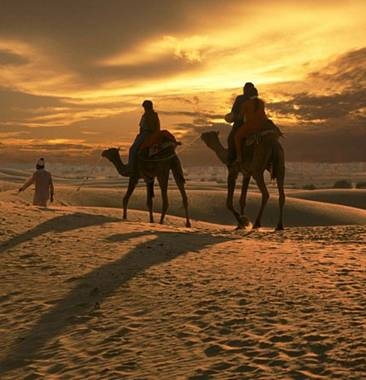
Pakistan: Tharparker
The land of oldest Civilization : Indus Valley and Mohenjo-Daro
Moenjodaro is the province of Sindh, Pakistan and archeology trace back it exitence 5000 years ago. It provides an earliest instance of exemplary form of town planning and community organization and found to be as one of the oldest cities known today. It is said to be the pilgrimage of ancient ruins. The splendor of Indus Valley civilization spread over a thousand mile from the high peak snowy mountains of Kashmir to the glittering sand dunes facing the Arabian Sea. One of the oldest known civilization that flourished in the Indus river Basin embraced within its fold almost the entire country now known as Pakistan.
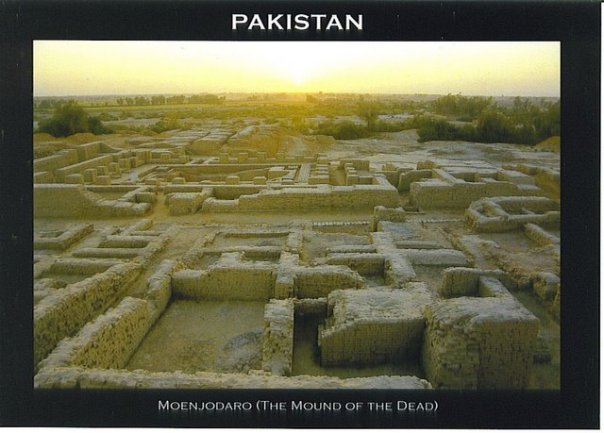
One of the oldest Civilization Known today
This is just an effort to provide a glimpse of blazzing glory of the culture, heritage, beauty within my country. In the next part of Amazing Pakistan I will try to cover the traditions, the culture and the city life that defines a spirit of being a Pakistani. All the facts given above have been checked and can be verified
Courtesy: Siyasat Aur Pakistan
![Eagles of brasstacks [Cyber force]](https://blogger.googleusercontent.com/img/b/R29vZ2xl/AVvXsEg_a6mLXb5xkyp4ojg9Q7j7EvO6GYmGukFkj09faLTZscMjI6zW9W9I_XiOCMxf7hPX9srmCE8WFHpDgLsQRCnLZaso_JmgO_J5pWuByrd6BWFFRQNqCfmL-FeWwfe4eJGo2FQlqkkOnVeU/s1600/untitled.bmp)




